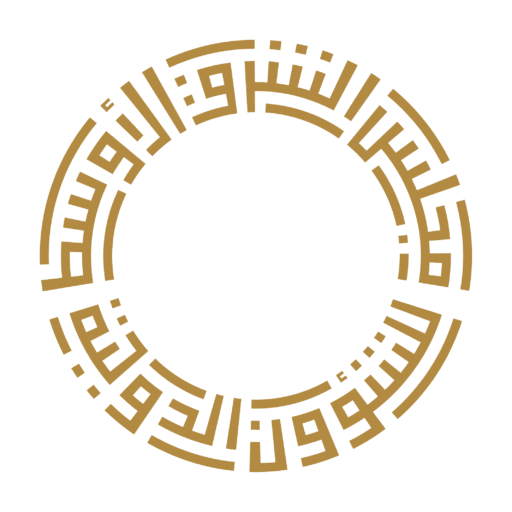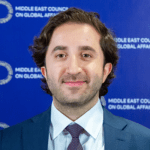Recent developments in Syria, including the fall of the Assad regime, Iran’s failure to quell the rebel advance into Damascus and subsequent withdrawal of its proxies from the country, have generated shockwaves in neighboring Iraq. For the first time in Iraq’s post-2003 political history, the prospect of breaking Iran’s outsized influence over the Iraqi state suddenly appears like a distinct possibility. The rapid, surprise takeover of power by Hayat Tahrir al-Sham (HTS) has given succor to Iraq’s own marginalized Arab Sunni population, which has long sought to contain, or end, the rule of Iran-aligned groups, especially the Popular Mobilization Force (PMF).
Indeed, the pressure on Prime Minister Muhammad al-Sudani to curb the influence of the Iran-backed umbrella militia organization is increasing, while the segment of Iraqi society and politics who oppose Iran’s domineering influence over their country is galvanized.
Sudani has already begun engaging in high-profile diplomacy to shape Iraq’s response to the evolving situation in Syria, both to mitigate the fallout and to prevent a similar scenario from unfolding at home. These intensive efforts have included numerous meetings with senior American officials and regional leaders, signaling Sudani’s intention to position Iraq as a pivotal actor in the volatile regional landscape that has emerged. Nevertheless, the premier—and Iraq—are in a very precarious position.
The Decline of Iranian Influence
The unexpected collapse of Iran’s decades-old regional security architecture in recent months has created new political realities in Lebanon, Syria and Iraq. The breakdown has shown that Iran-aligned militia groups are not invincible, and their ascension is reversible. The coinciding of this dynamic with the return of Donald Trump to office further increases the pressure on the Iraqi state to reign in these groups, given Washington is likely to see Iran and its Iraqi allies as two sides of the same coin as it forges its regional policy. Iraq is, therefore, at a crossroads.
From the perspective of Tehran and its allies, fears abound over whether events in Syria could inspire a similar rebellion in Iraq. Iranian-backed Iraqi militias had played a critical role propping up the Assad regime, and ties between Damascus and Baghdad were deep-rooted. The domino effect is even more plausible if there is pressure toward this end from the Trump administration, which would leave Iran and its allies with no choice but to adopt an assertive and increasingly belligerent position within Iraq.
Domestic discontent with the PMF’s influence has been rising in recent years. In 2019-2020, the umbrella organization brutally suppressed a major protest movement that was threatening its dominance, which has only added to the grievance. Despite the repression, opposition has proven to be remarkably resilient.
Still, the PMF could choose to pre-empt a long-term threat to its power through crackdown measures, particularly if the PMF’s rivals give any indication that they intend to exploit the crisis facing Iran’s regional architecture. This could have wide-ranging and violent implications for Iraq.
At the same time, there are limits and costs to such action and the PMF leadership may be divided over how to handle the situation. Iraq is heading toward elections this year and violently engaging rivals, whether it is the Sadrists—who will seek to exploit any vulnerabilities—or the Iraqi state, could undermine its support base.
Such domestic calculations and the risk of blowback has prompted Iraq’s government to engage with Syria’s new leadership. On December 26, 2024, a delegation from Iraq, led by head of the Iraqi National Intelligence Service Hamid al-Shatri, travelled to Damascus to engage in discussions with the HTS-led administration. Much of the talks reportedly focused on issues surrounding Baghdad’s concerns that armed groups in Syria could widen their ties to Arab Sunni militant groups, including both remnants of the post-2003 Sunni insurgency and ISIS cells still operating in Iraq. Baghdad also called for Iraqi Shiite militia forces to be released from Syria’s prisons.
Misplaced Calculations
Speculation about an international campaign to dismantle the PMF has intensified, driven by emerging divisions within Iraq’s Shiite political establishment and Iran’s perceived inability to protect its regional allies. How the PMF and its rivals proceed will shape the political landscape over the coming period.
While Sudani has not demonstrated any immediate intent to move against Iran-backed armed groups, the PMF still has memories of former Prime Minister Mustafa al-Kadhimi’s efforts to pushback against the PMF. This inflicted dents in the organization’s operational capabilities and suppressed the space in which it could operate. Adding complexity to the situation, the United Nations’ representative in Iraq, Mohammad Al-Hassan, was rumored to be engaged in discussions with Grand Ayatollah Ali Al-Sistani, Iraq’s most influential Shiite cleric, in an effort to secure a fatwa calling for the demobilization of the PMF.
Such a religious decree would carry immense weight due to Sistani’s authority and the role his 2014 call to arms to fight the Islamic State played in the PMF’s formation. However, the integration of the PMF into Iraq’s formal military structure makes any push for demobilization fraught with political and practical challenges. The PMF’s role in Iraq’s defense apparatus, and its deep-rooted ties to influential political factions, mean that a broad campaign to disband it could provoke significant opposition and instability.
Looking forward, Iraq’s relationship with Syria is likely to evolve cautiously. Despite mounting speculation about a potential shift in policy, Sudani has so far maintained a consistent stance by aligning with the Iran-backed Shiite Coordination Framework, a key political bloc that supports his administration and will be crucial to securing an additional term for the premier in upcoming elections this year.
The intertwined issues of the PMF’s future and Iraq’s role in regional diplomacy highlight the challenges facing Sudani’s government. On the one hand, he must manage domestic factions and preserve political stability while navigating international expectations to curtail Iranian influence. On the other, he aims to project Iraq as a constructive mediator in regional conflicts, leveraging its unique position as a bridge between competing interests.
This balancing act will continue to shape Sudani’s approach as he strives to maintain his leadership amid mounting internal and external pressures. At the same time, the Trump administration and wider regional and domestic dynamics could make this an exercise in futility.


